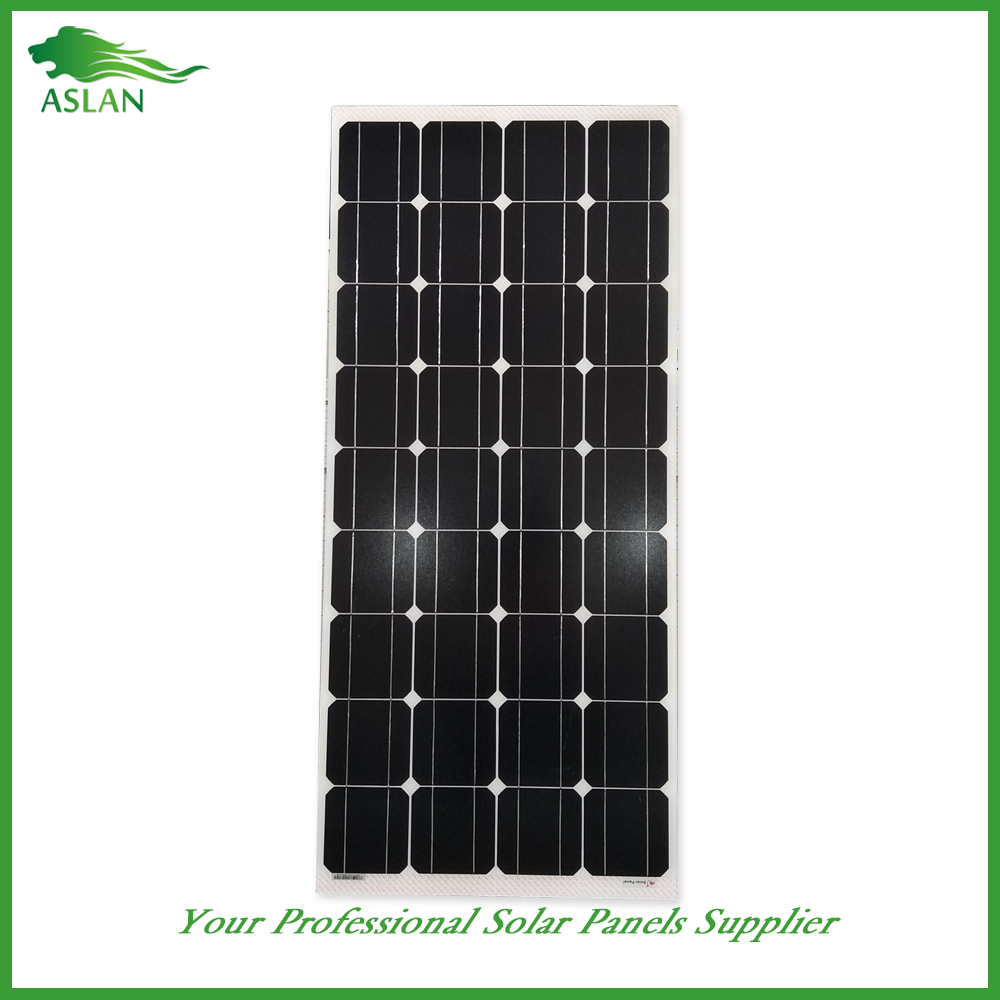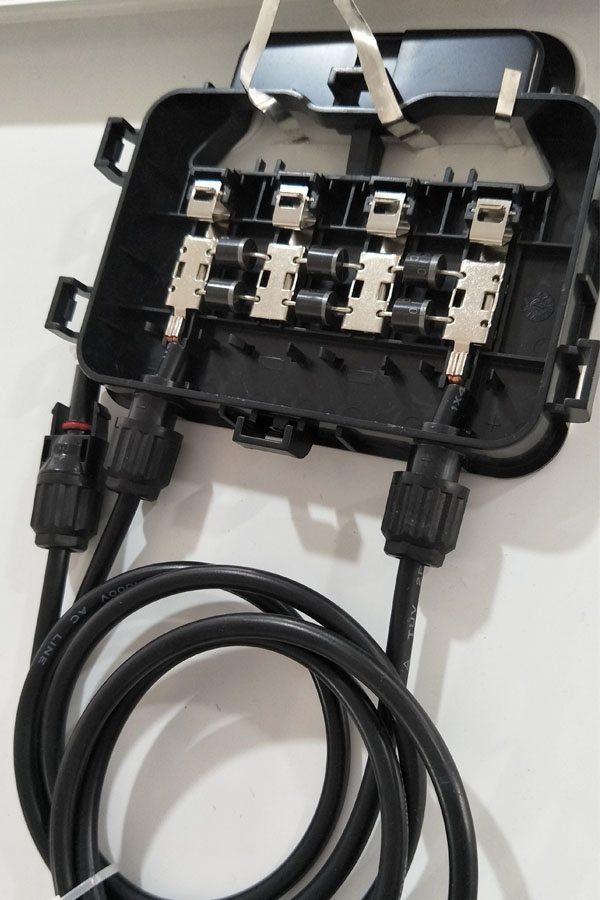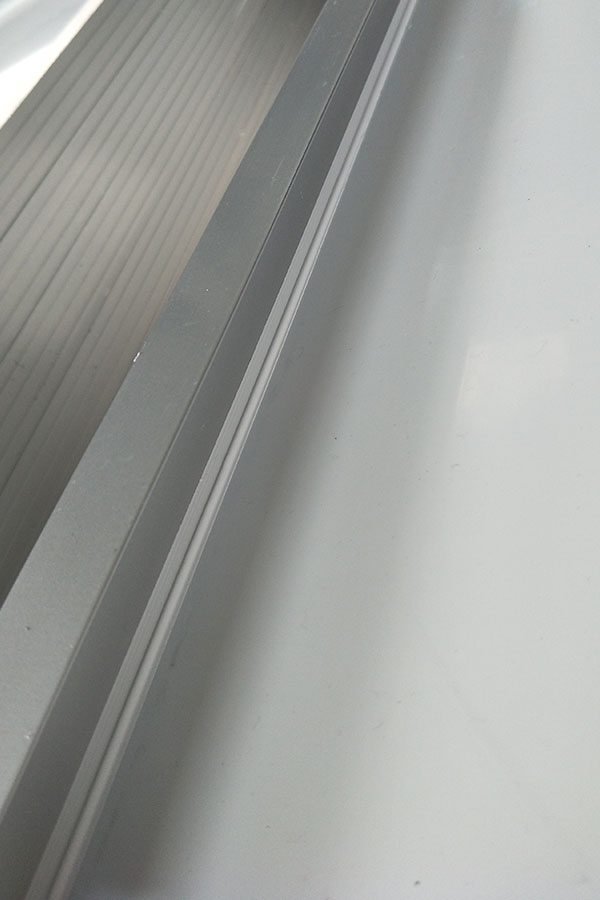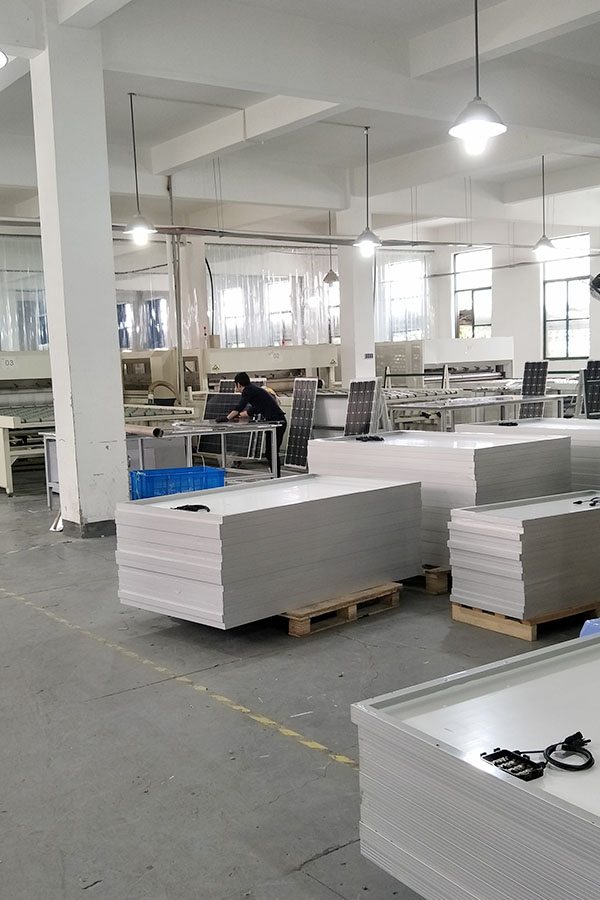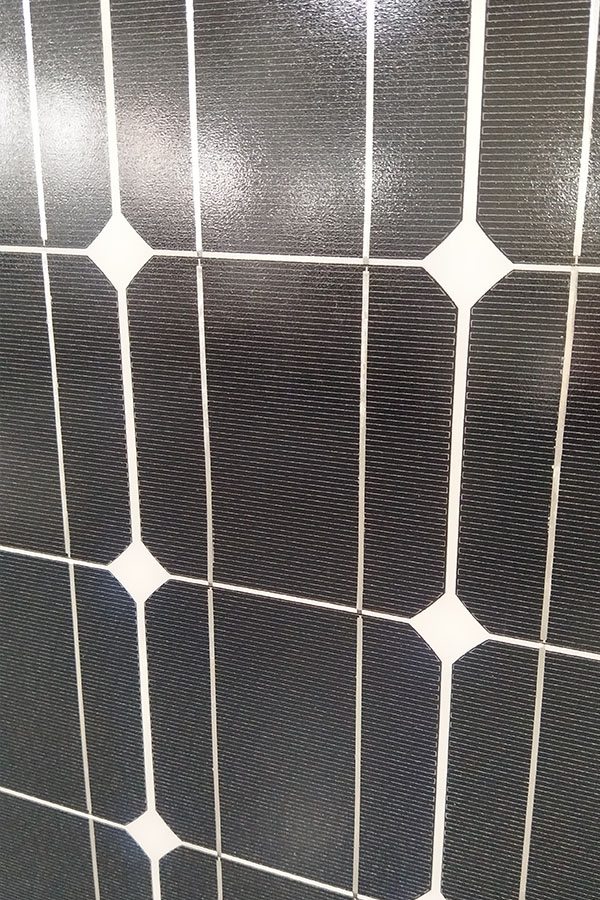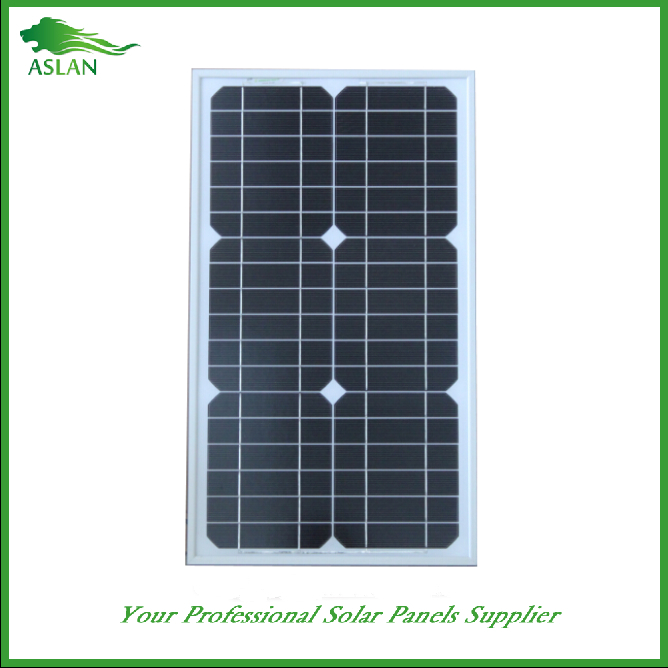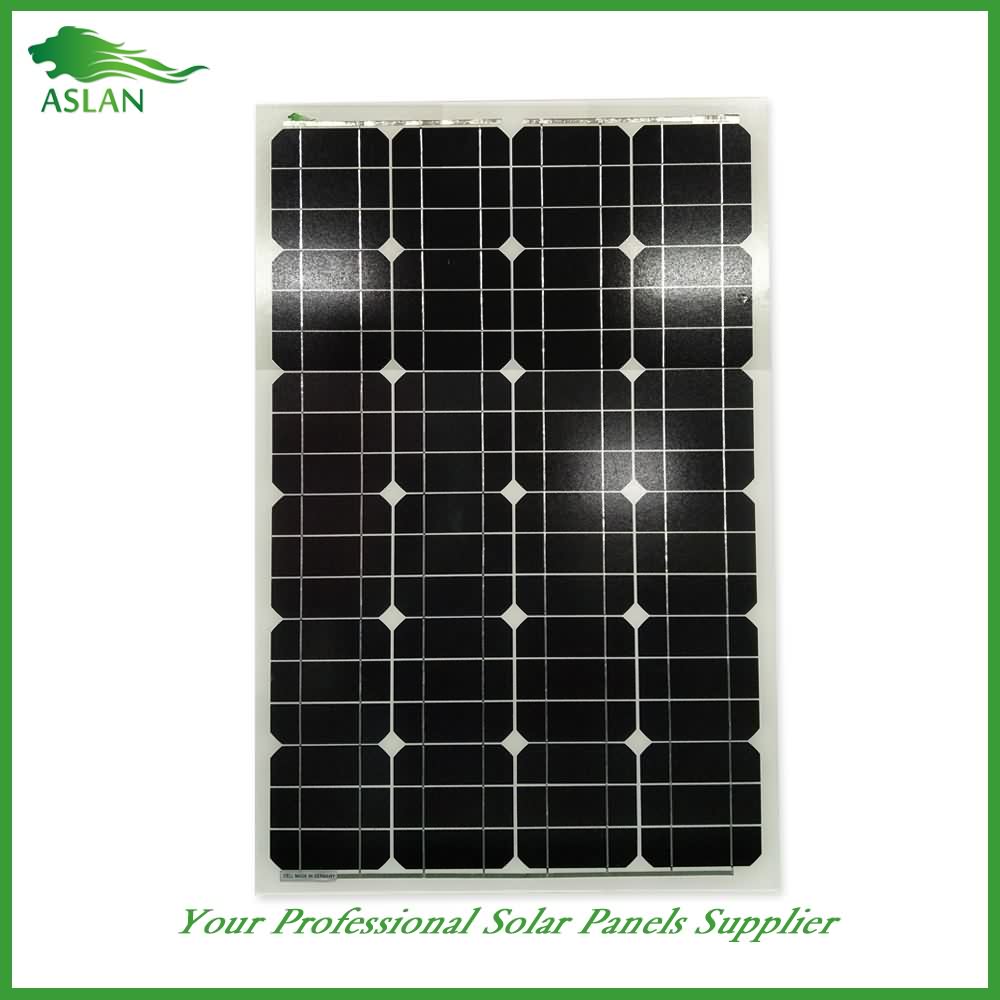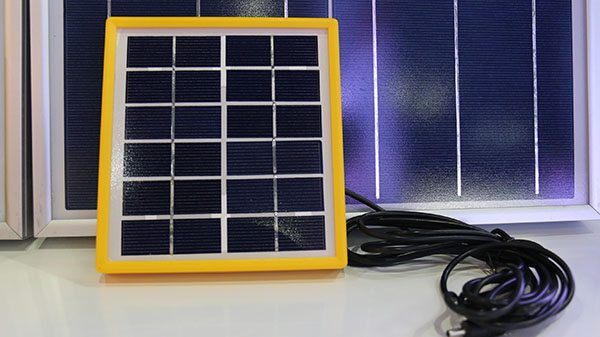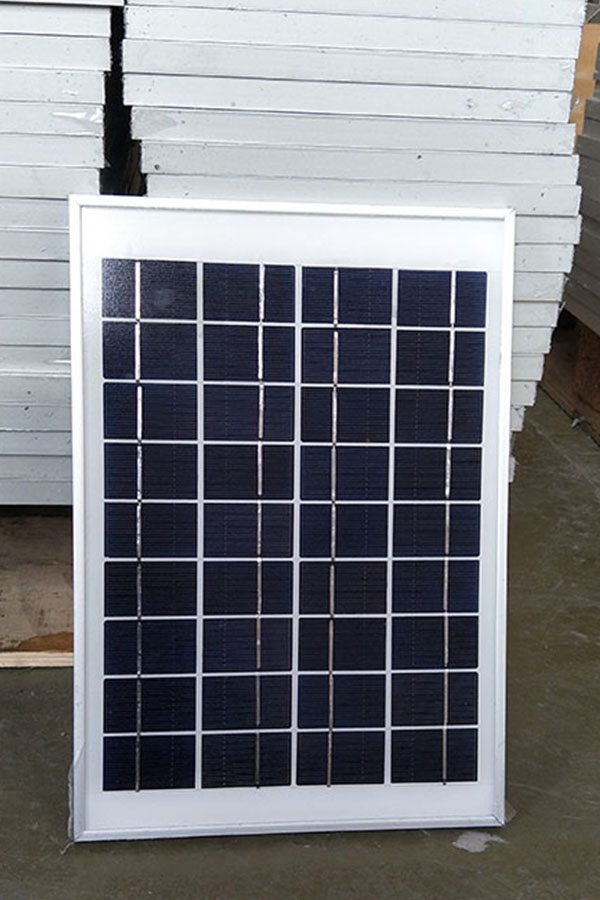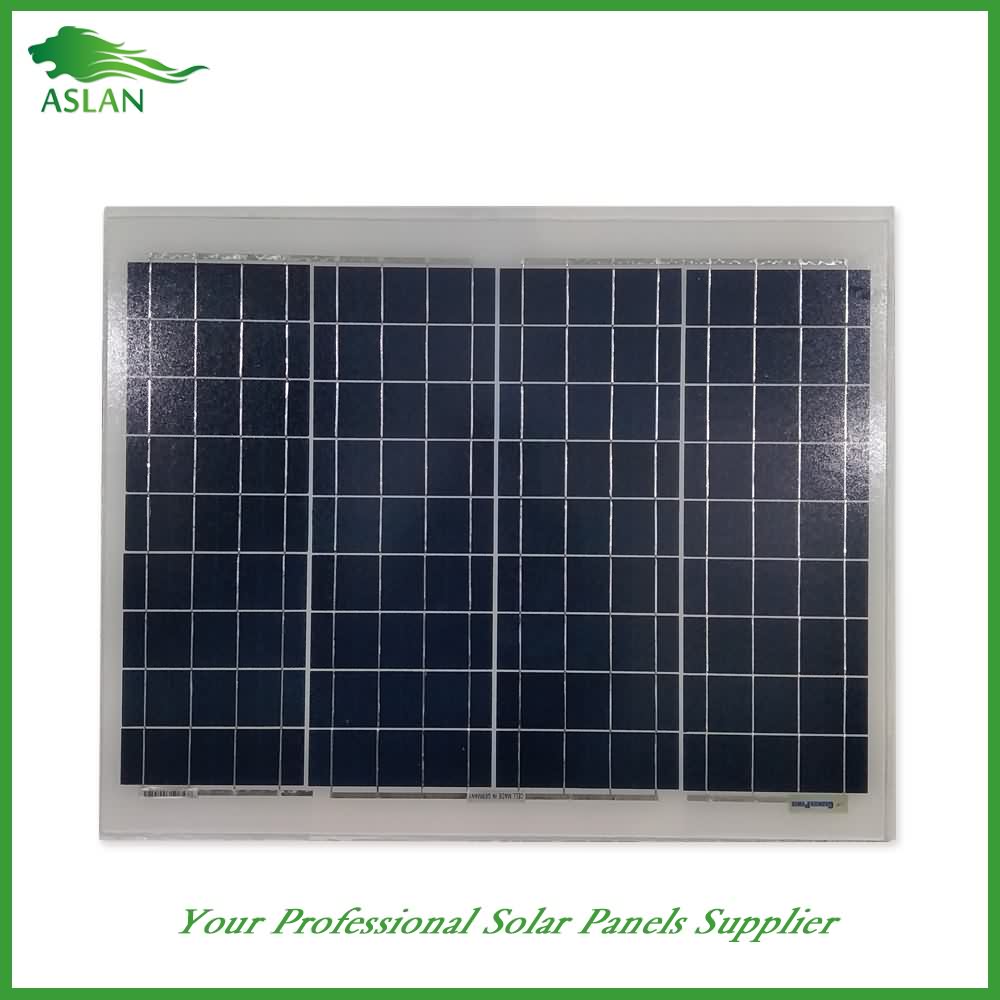Supply for Mono-Crystalline 150W Solar Panel Romania Importers
Short Description:
We can always satisfy our respected customers with our good quality, good price and good service due to we are more professional and more hard-working and do it in cost-effective way for Supply for Mono-Crystalline 150W Solar Panel Romania Importers, We appreciate your enquiry and it's our honor to work with every friend worldwide.
Mono-Crystalline 150W Solar Panel
Technical parameter
Maximum Power(W) 150W
Optimum Power Voltage(Vmp) 17.92V
Optimum Operating Current(Imp) 7.83A
Open Circuit Voltage(Voc) 21.86V
Short Circuit Current(Isc) 8.59A
Mechanical Characteristics
Cell Type Monocrystalline 156x156mm (6 inch)
No of Cell 36 (4x9pcs)
Dimensions 1485x668x35mm
Weight 11.6KGS
Front Glass 3.2mm,High Transmission, Low Iron,Tempered Glass
Junction box IP65 Rated
Output Cable TUV 1×4.0mm2/UL12AWG,Length:900mm
Temperature and Coefficients
Operating Temperature(°C): -40°C ~ + 85°C
Maximum System Voltage: 600V(UL)/1000V(IEC) DC
Maximum Rated Current Series: 15A
Temperature Coefficients of Pmax: -0.435%
Temperature Coefficients of Voc: -0.35%
Temperature Coefficients of Isc: 0.043%
Nominal Operationg Cell Temperature (NOCT): 47+/-2°C
Materials of solar panel
1).Solar Cell——Mono-crystalline solar cell 156*156mm
2).Front Glass——-3.2mm, high transmission, low iron, tempered glass
3).EVA——-excellent anti-aging EVA
4).TPT——-TPT hot seal made of flame resistance
5).Frame——anodized aluminum profile
6).Junction Box——-IP65 rated, high quality, with diode protection
Superiority: high quality anodized aluminum frame, high efficiency long life, easy installation, strong wind resistance, strong hail resistance.
Features
1. High cell efficiency with quality silicon materials for long term output stability
2. Strictly quality control ensure the stability and reliability, totally 23 QC procedures
3. High transmittance low iron tempered glass with enhanced stiffness and impact resistance
4. Both Polycrystalline and Mono-crystalline
5. Excellent performance in harsh weather
6. Outstanding electrical performance under high temperature and low irradiance
Quality assurance testing
Thermal cycling test
Thermal shock test
Thermal/Freezing and high humidity cycling test
Electrical isolation test
Hail impact test
Mechanical, wind and twist loading test
Salt mist test
Light and water-exposure test
Moist carbon dioxide/sulphur dioxide
A small toy with a tiny electric engine and a solar panel that is operated by the sun
THE SOLAR ENERGY OUTLOOK FOR 2013
Visit RENVU at: http://www.renvu.com
Based on an article published on Renewable Energy World.com By Vince Font
With 2013 poised to pounce, now’s the time for all forward thinking solar proponents to peer into that proverbial crystal ball to see what the new year holds in store. What will 2013 look like for global solar initiatives? How will this impact the creation of jobs? Here’s what some of the experts have to say about the outlook for the coming year.
Low Cost Solar PV Will Lead to Increased Development and More Jobs
As a result of the oversupply of solar PV panels in 2011 and 2012, costs were driven down significantly. This spelled bad news for solar PV manufacturers seeking to make decent returns or any returns at all, but led to increased opportunities for downstream providers to pursue large-scale solar developments, both within the major global markets and also developing countries that previously weren’t able to afford it.
With respect to the plummeting cost of solar panels, Kreamer says he doesn’t expect prices to continue to drop in 2013 as rapidly as they did in the last two years. “Over the long-term,” Kreamer said, “like other semi-conductor industries, we expect solar module cost to decline and efficiency to increase. Since modules today account for less than 20 percent of a solar system’s cost, solar generation competitiveness gains are likely to come from other parts of the cost structure, such as customer acquisition and permitting.”
Shah adds that most developers today are “not looking for price reductions,” citing significantly lowered costs as the primary reason. “The difference between getting a 70 cent a watt module and a 65 cent a watt module is just not that big of a deal anymore for system costs,” Shah said. “People are now looking at non price features for making decision on who to buy from.”
Little Impact Predicted from U.S. / Chinese Solar Cell Tariffs
The recently published U.S. Solar Market Insight Report, which was released by the Solar Energy Industries Association (SEIA) and GTM Research, states that the impact of tariffs imposed against Chinese solar manufacturer providers will be minimal, as they only apply to panels using Chinese manufactured solar cells — something that can be easily circumvented.
According to Shah, Chinese solar manufacturers will be virtually unaffected by the tariffs because of a pre-existing diversity in their solar product lines. “Today, the Chinese already diversify by using Taiwanese cells,” Shah explained, “so they’re just sending those Taiwanese cell modules to the U.S. instead.”
The SEIA report claims that “tariffs will not have a material impact on pricing in the U.S.” and goes on to explain that Taiwanese-obtained solar cells will come with a cost impact of less than $0.10 per watt.
Consolidation and Specialization Will Emerge in 2013
Although the industry has already begun to show signs of consolidation by way of numerous bankruptcies and the absorption of assets by larger solar companies, Kreamer sees this as a trend that’s likely to increase into 2013. He also predicts fewer all-in-one corporations and a more widespread distribution of supply chain services.
Saudi Arabia Makes Inroads to Solar Dominance
According to Marc Norman, lawyer for Chadbourne & Park LLP and director of the Emirates Solar Industry Association (ESIA), the official launch of Saudi Arabia’s plan to procure 54,000 MW of renewable energy capacity by 2030 is due to take place in the second quarter of 2013. The first step will be an introductory procurement round for up to 600 MW of solar power facilities and 100 MW of wind power.
Emerging Markets Will Bring Global Solar Industry Stability
The recently released IHS Solar Emerging Markets Study predicts that emerging markets in Asia Pacific, Latin America, the Middle-East, Africa and “emerging Europe” will help strengthen the solar industry, beginning in 2013. The report indicates that up to 30 GW of PV capacity will be added throughout various emerging markets in the next four years, helping to stabilize an industry that’s steeling itself against the elimination of critical incentives in several European markets. It says that 2.1 to 3.5 GW of new PV capacity will be added in 2013 alone.
Based on an article published on Renewable Energy World.com By Vince Font
